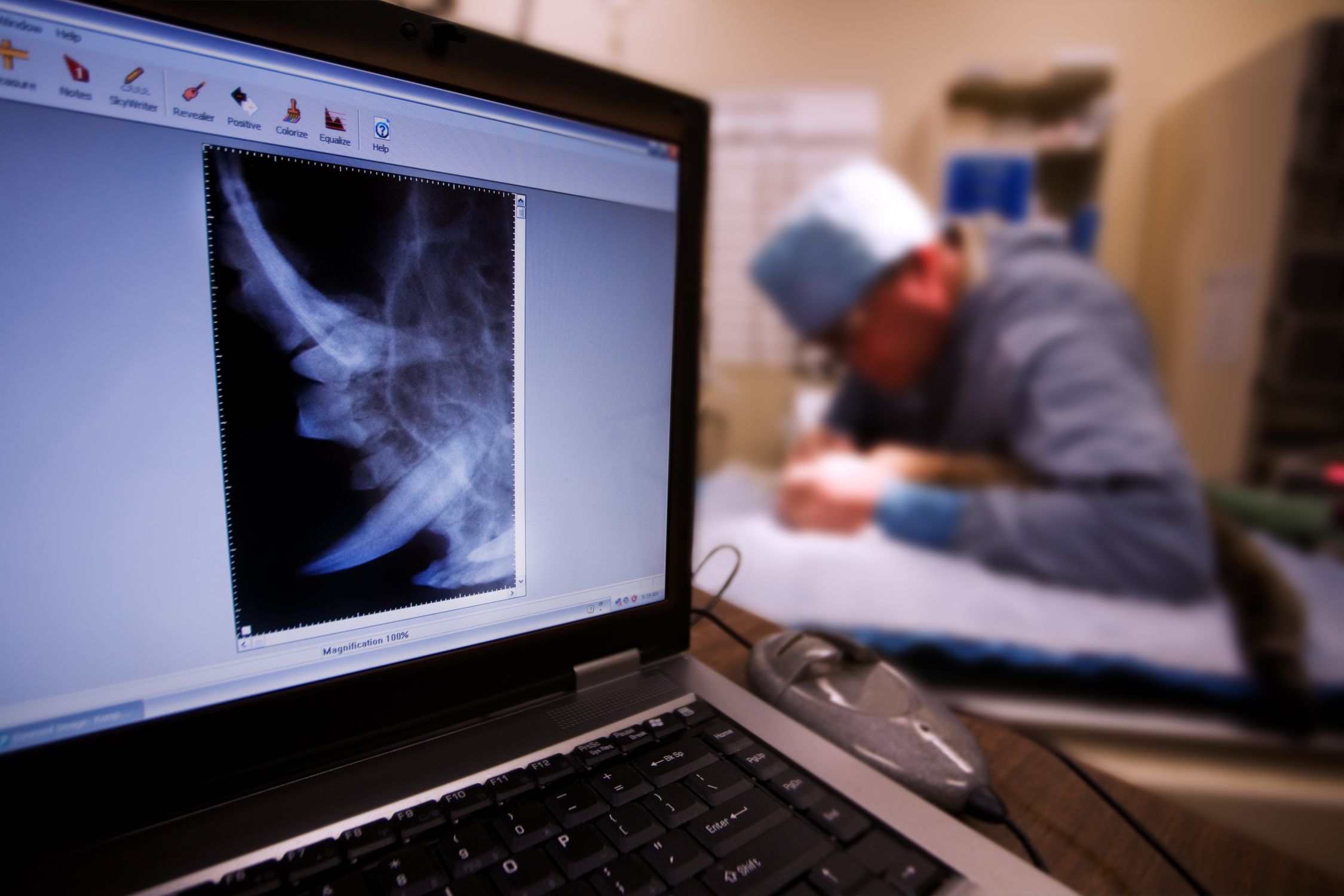A Picture Is Worth A Thousand Words: Dental X-Rays For Pets
If your pet has dental disease, chances are you may not even be aware of it. Most of us don’t look into our pet’s mouths very often, and the only outward sign that your pet might be in trouble is the telltale bad breath.
Unfortunately, by the time you notice bad breath in your pet, dental disease may be a foregone conclusion. That’s one reason we recommend regular wellness exams, which include a look into your pet’s mouth. In this way, we can often catch dental disease early.
Of course, that peek into your pet’s mouth is only a peek. Most of the time, dental disease is below the gum line, where no one can see it. We need to do much more to ascertain the true health of your pet’s mouth. Enter: dental x-rays for pets.
The Basics Of Pet Dental Health
Bacteria in the mouth combine with food particles to form plaque, a sticky substance that coats the teeth. Within days, saliva in the mouth combines with plaque to harden into tartar. The bacteria then migrate below the gum line, causing inflamed, red and swollen gums – a condition called gingivitis.
If left untreated, this bacteria then begins to damage the supporting structures of the tooth, causing periodontitis and eventually tooth loss. Dental disease, while painful for your pet, is also dangerous for their health. The bacteria from untreated dental disease can migrate through the bloodstream to infect internal organs such as the liver, kidneys, and heart.
Looking Beneath The Surface
Unlike in people, pet dental disease occurs mainly below the gum line. For this reason, what we see on the surface may only be the tip of the iceberg. Since most of the tooth structures lie beneath the gum line, we must rely on dental x-rays to give us a complete picture of tooth health.
Luckily, dental x-rays for pets are accurate, clear, and incredibly fast with digital technology.
Benefits of Dental X-rays for Pets
Digital dental x-rays can capture many facets of dental disease in pets, such as:
- Gum disease
- Oral tumors
- Tooth fractures
- Infection
- Fistulas
- Bone loss
Dental x-rays are a valuable way for us to see the beginning stages of dental disease, long before their deleterious effects are seen in your pet’s mouth or their body.
Anesthesia
Of course, pets don’t sit still with their mouths open for dental x-rays. To minimize stress and make sure we capture accurate images, anesthesia is required for dental x-rays, as well as the dental exam and cleaning. We take every safety precaution before, during, and after anesthesia to make sure your pet is comfortable and safe. All pets are carefully monitored and recovered.
Your pet’s dental health is a top priority here at Sunrise Boulevard Animal Hospital. If you have any questions or concerns about dental x-rays in pets, please give us a call.

